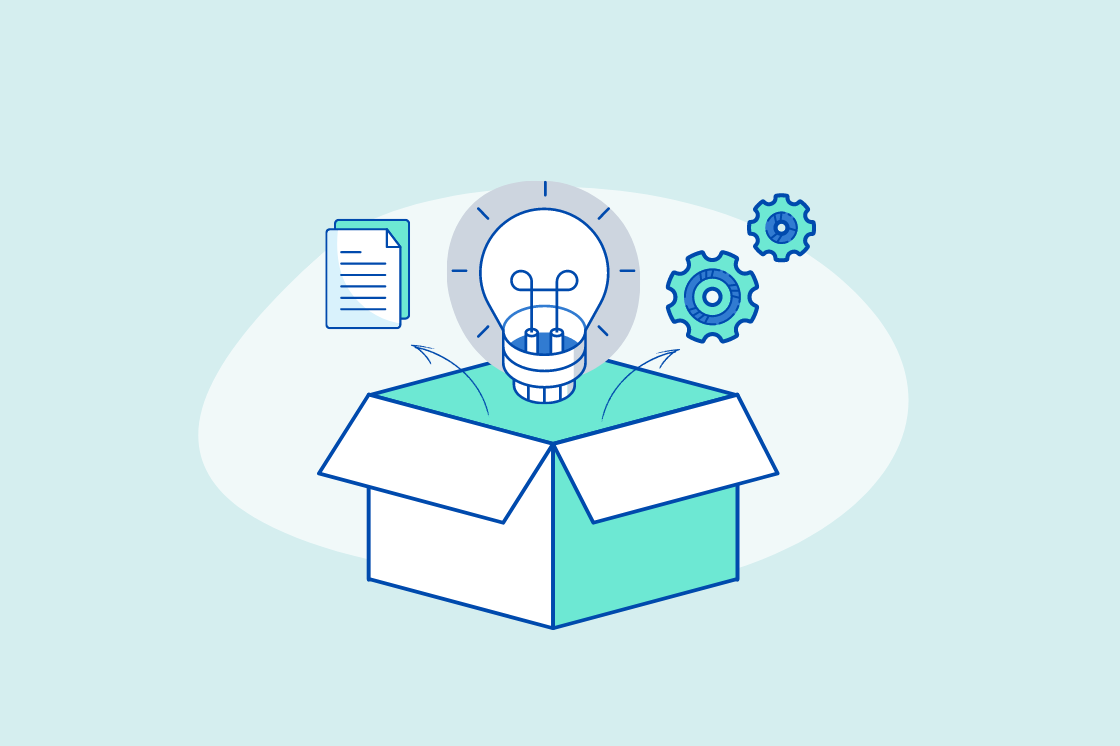Understand Your Processes Through Process Discovery and Identification
Does your organization have a good understanding of their business processes? If not, consider embarking on Business Process Discovery and Identification.
Business Process Discovery and Identification is the first step in the Business Process Management cycle.
This step is crucial because it helps organizations analyze their business processes to identify improvement opportunities.
Business Process Discovery and Identification starts with uncovering all the business processes within an organization and categorizing them based on their importance, complexity, and impact on the overall business performance.
This categorization is a Level 1 view of your company's processes. Learn more about process levels and the business process framework.
You may then choose a specific process from the categorization list and capture the information required to create a detailed process map, sometimes called the As-Is process map.
Data Collection
Creating the As-Is process starts with collecting data from various sources, such as interviews, workshops, observations, and existing documentation.
Process Interviews
Process interviews are a great way to get to know the process. Here are some recommended steps for conducting the process interviews.
-
Identify the key stakeholders
Select individuals involved or have critical insights into the process. These could include the process owner, the process manager, and those actively performing the process. -
Prepare your questions
For consistency, you should use the same questions in all your interviews. The questions should be open-ended. Stay away from questions with yes/no answers. The goal is to get the person to share as much information as possible. Ask them to explain the steps in the process, tools used to support the process, pain points, bottlenecks, and potential areas for improvement. It is also good to ask what works well in the process. One possible question is, "If you can wave a magic wand, what would you change in the process?" -
Schedule Interviews
Proceed in scheduling the interviews with the stakeholders, ensuring it is convenient for all parties involved. We suggest scheduling at least 1 hour with each person. If required, you can schedule group interviews. However, group interviews could make some in the group less likely to share. -
Conduct Interviews
Start the interview by reminding the person who you are and why you are there. During the interviews, actively listen to the responses, ask follow-up questions, and encourage participants to provide specific examples or details related to the process. -
Document Insights
Remember to take copious notes, or better yet, get permission to record the interview. Sometimes, having a second person with you is helpful to assist in note-taking. -
Prepare Findings
Review the information gathered from the interviews to identify common themes, discrepancies, and opportunities for process enhancement. Capturing your findings in a spreadsheet can help you organize and categorize your findings and observations.
Process Observations
This step in Business Process Discovery and Identification involves a first-hand look at how the existing process functions. You should observe the process in action, either through direct observation or by shadowing employees as they go about their tasks.
It's essential to take note of the sequence of steps, any potential bottlenecks or delays, and how different departments or individuals interact during the process.
You should also attend process management meetings to understand how the process is governed and managed.
Documenting all observations and insights gathered from the process observations is crucial as you can use the information to document the As-Is process and analyze the process.
Process Documentation
Gather and review all existing process documentation. This review should include procedures, work instructions, and other related documents.
Take note of such things as the comprehensiveness of the documentation, the clarity of the documentation, and the last revision date of the documentation.
Other things to look for include whether the documentation was easy to find, whether there was a centralized process repository, and whether there were multiple versions of the same document, leading to confusion.
This documentation will play an essential role in developing an up-to-date As-Is process.
Process Workshops
Process workshops, in the context of business process discovery and identification, are collaborative sessions where stakeholders map out existing processes.
These workshops often involve cross-functional teams and use visual tools like process maps to illustrate the flow of activities and decision points.
Workshops can be instrumental in fostering a shared understanding of current processes and generating innovative ideas for optimization.
Conduct the workshop using a "straw model" process map of the existing process. Create the straw model using information gathered during your interviews, observations, and reviews of existing process documentation.
Use the process map to walk the participants through the current process to clarify understanding or identify areas for improvement.
Creating the As-Is Process
Now that you have completed all your information gathering, it is time to create the As-Is process.
The term "as-is process" refers to the current state or existing workflow of a particular system or business process.
The As-Is process is much more than a simple process flow chart. The As-Is process should include the process description, goal, objectives, roles, responsibilities, supporting automation systems, metrics, policies, controls, and a process map.
Other diagrams, such as a RACI chart or SIPOC diagram, could also be included.
The As-Is process reflects the current state and serves as a baseline for comparison when redesigning or optimizing processes.
Check out these Resources on Process Documentation:
- Webinar: Best Practices in Process Design and Documentation
- Introduction to Process Mapping
- An Introduction to Process Mapping
Process Analysis and Recommendations
Analyzing the As-Is process is crucial in any business process improvement initiative. The primary objective behind this analysis is to gain a comprehensive understanding of the existing processes, workflows, and activities that are currently in place.
By doing so, businesses can identify inefficiencies, bottlenecks, or areas of improvement within their processes before initiating any changes or implementing new systems.
This analysis helps identify the root cause of any issues that may be hindering the efficiency of the process and provides insights into how to optimize the process for better results.
It also helps identify areas where your company can leverage business process automation or digital transformation to streamline the process and reduce manual efforts.
Process Maturity Assessments
Conducting a process maturity assessment can supplement your process identification efforts.
A Process Maturity Assessment is a systematic evaluation of an organization's processes and practices to determine their level of maturity. Maturity in this context refers to the organization's ability to reliably and consistently achieve its goals by effectively implementing its processes.
We measure maturity on a 1-5 scale, where level 1 represents an ad-hoc or non-existent process, and level 5 is a mature process that continuously undergoes improvement.
Here are some resources for conducting a process maturity assessment.
Business Process Discovery Tools
Process discovery and identification has traditionally been time-consuming and complex, requiring significant manual effort, expertise, and experience. However, with the advent of Process Discovery tools, this task has become more streamlined and efficient.
Process Mining Tools
Process mining software is highly useful in analyzing data from multiple sources within an organization.
These tools source data from multiple areas including logs, databases, and various other systems used by the organization.
The main objective of process mining is to provide insights into how data flows through these systems and identify areas where improvements can be made to streamline the process.
By analyzing the data, process mining software can help organizations identify bottlenecks, inefficiencies, and other obstacles that may be hindering their business processes.
The insights provided by process mining software can help organizations optimize their workflows, reduce costs, and improve overall efficiency.
Examples of Process Mining Tools
There are a growing number of tools in the market. These tools offer robust capabilities for process discovery, analysis, and optimization, leveraging AI and machine learning to drive insights and improvements within business processes.
Here is a sampling of some of the available tools.
Celonis
Celonis offers an Execution Management System that provides process mining and process excellence solutions. It leverages AI and machine learning to analyze event data and offer insights into business processes.
UiPath Process Mining
UiPath's Process Mining tool is part of its Business Automation Platform, offering capabilities to automatically capture and analyze business processes. It provides visibility into process execution and identifies improvement opportunities.
IBM Process Mining
IBM offers process mining solutions that utilize advanced analytics to discover, monitor, and improve business processes based on event log data. It helps organizations enhance their operational performance through actionable insights.
Engage Process
Engage Process is a process mining tool focused on providing visual representations of process flows, making it easier for stakeholders to understand complex processes and identify opportunities for optimization.
LANA Process Mining
LANA Process Mining is known for its AI-driven approach to process discovery and analysis. It helps organizations gain deeper insights into their operational workflows and drive continuous optimization.
Process Mining Tools Considerations
It's important to note that business process mining software focuses on automated processes and how data flows through the various systems in the organization. Getting out and talking to the people involved in the manual process steps remains essential.
AI for Business Process Discovery
Artificial Intelligence (AI) has become a game-changer in the field of Business Process Discovery. AI algorithms are designed to analyze large amounts of data and identify patterns, trends, and anomalies that may not be immediately visible to the human eye. This capability makes AI-powered process mining tools ideal for analyzing complex business processes that involve multiple systems and data sources.
Effective process management requires Process Discovery. This involves categorizing, documenting, and analyzing processes to improve communication, better understand operations, and identify opportunities for enhancement. The next element we will explore in our video series on business process management is process mapping.

%20(1).png?width=1800&height=300&name=GIF%20Header%20-%20Super%20HQ%20(1800%20%C3%97%20300%20px)%20(1).png)


